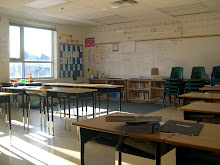

After read aloud, Jesse was extremely eager to read Ruby Sings the Blues. I told him that he needed to wait until independent reading time to do so. So during
reader’s workshop, Jesse could not wait to read Ruby Sings the Blues ; he even invited me to join him. He was very engaged in the pictures and Ruby’s character. When i sat beside him, he was eager to read aloud the story to me all over again. During his read aloud, he imitated her voice with expression (see exhibit 15).
From the observation/ conference notes, it is blatant that Jesse could not stop asking questions while he was reading. He asked questions that he showed great interest in; he really wanted to know more about Ruby, and at the same time, he also wanted to make text-to-self connection. For instance, he was really into the story because he noticed that Ruby lives in an apartment like him. He also told me that Ruby’s neighborhood also looks like his neighborhood. For every page he read, he paused to look at the illustrations carefully and tried to decode Ruby's life and her neighbors' lives in the community.
Linking this particular conference back to Kathy Sandford's article (2006), she mentions that today, literacy and gender have a great intersecting complexity in schools. This is mainly due to the diverse types of text and their presentation in our society. For example, with the vast exposure of social and technological situations, children are looking at literacy in a perhaps, 'different' perspective. 'Literacy now relates to a much broader set of texts including visual, multimodal, and digital tet that appear in many forms all around us' (p. 304). The diverse types of texts such as billboards, magazines, the Internet, and many others are overpowering traditional school texts such as information texbooks, and novels. Having this piece of important information in mind, I have to be absolutely sure that the books I choose and offer to my students are pertinent to their preference so that they could be engaged in reading, thus increase their motivation.

2 comments:
This is a terrific article and quotation to use for analyzing the reading practices and preferences of boys; however, I'm not sure it's clear how you are connecting them to your observations about Jesse. The quotation deals with non-print text, yet you are still focusing on Jesse's work with books (albeit picture books). Please clarify or make more explicit how this analysis makes sense to you.
Revised Entry
I agree with you Grace. I can further elaborate my point here. Based on Sandford’s literature, multimodal literacy is now emerging into children’s lives. I think in order to motivate children’s love for reading, it is crucial for teachers to be aware of the different types of media and reading materials that are coming out. Nathan and Jesse, are both resistant in reading, whom are not quite clear about the purpose for reading, and what they enjoy reading. The advantage of introducing multimodal literacy to students like Nathan and Jesse is that they will be exposed to more variety of reading materials – printed texts like books, magazines, game manuals, as well as text found on the Internet. When they have more choices to select from, they are more likely to find a type of reading material that they enjoy.
Post a Comment